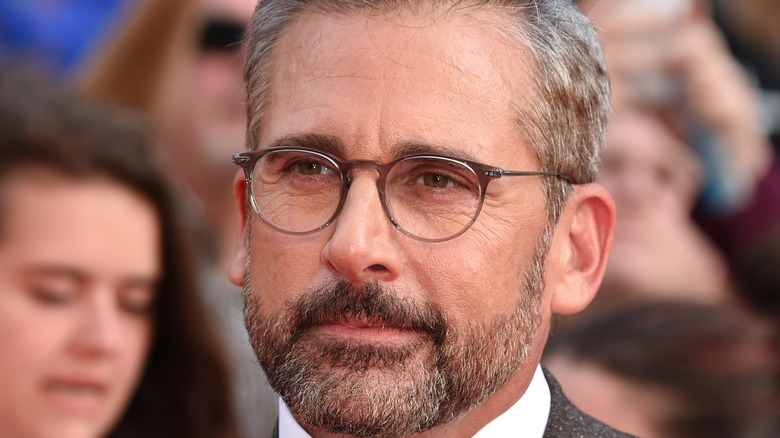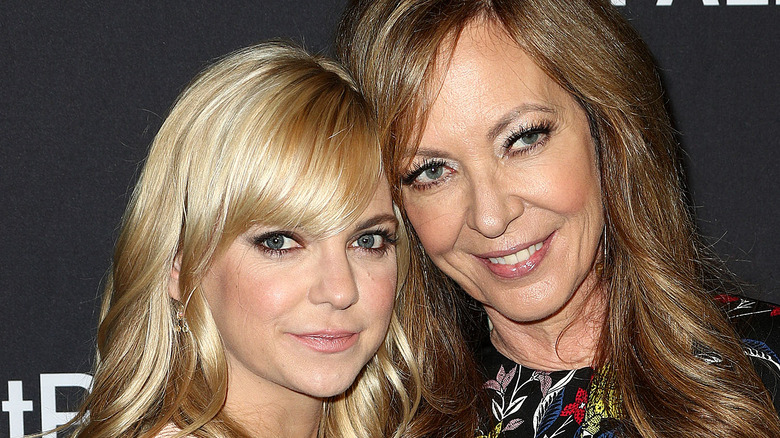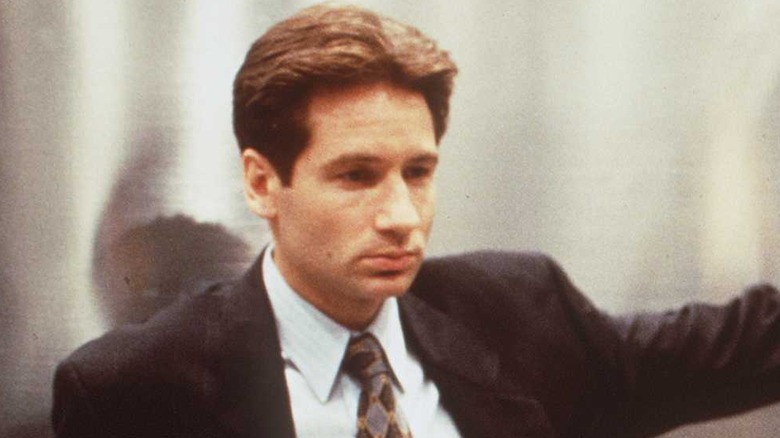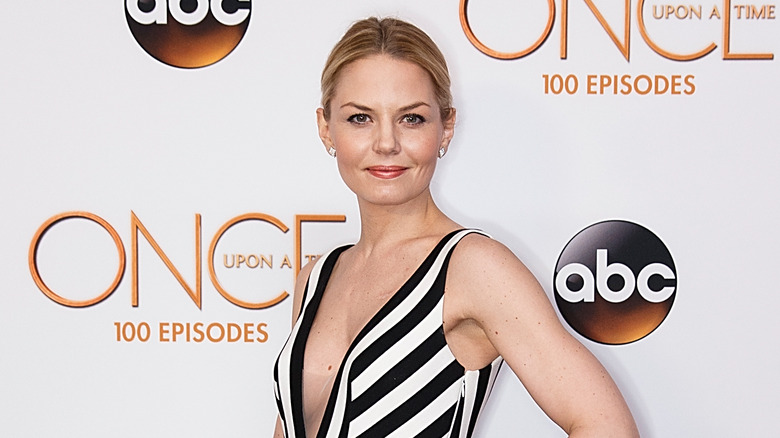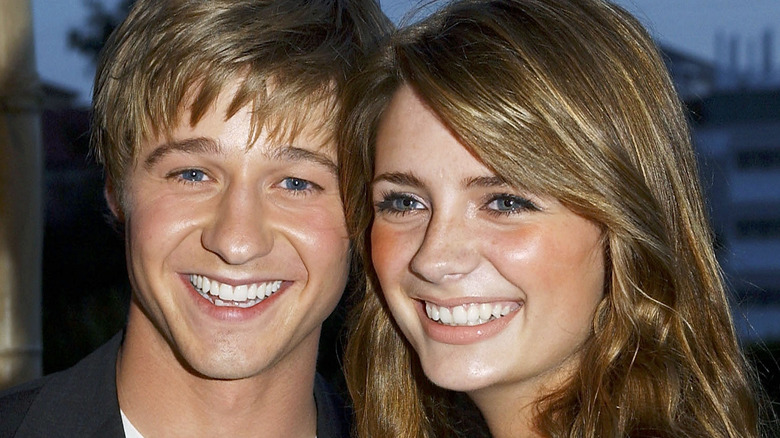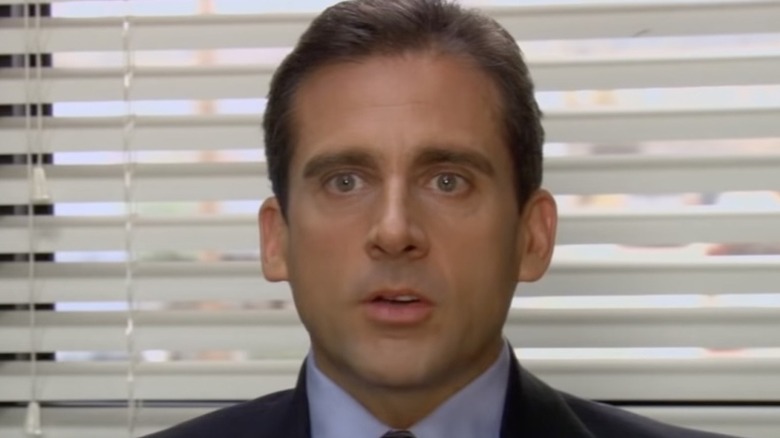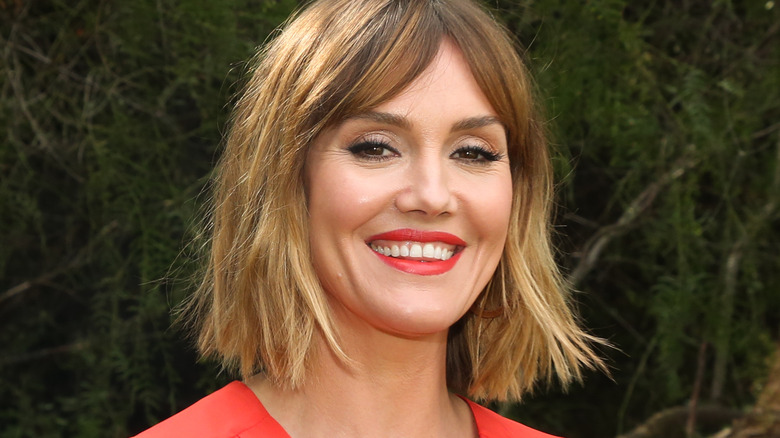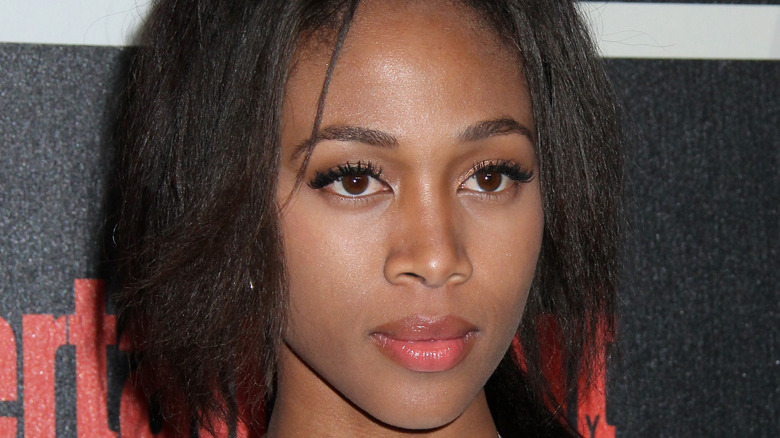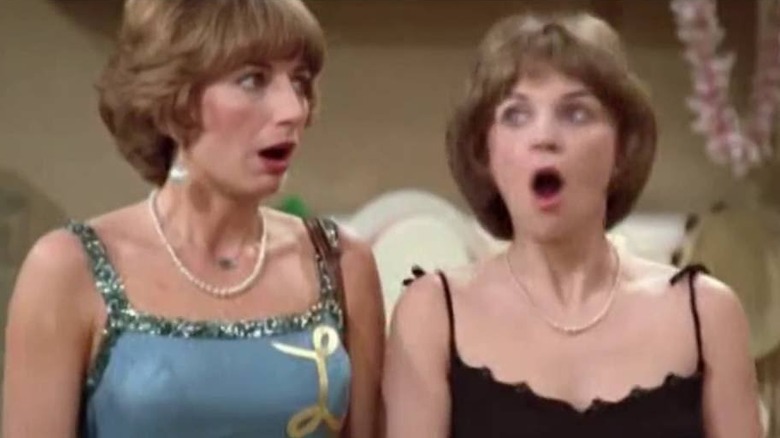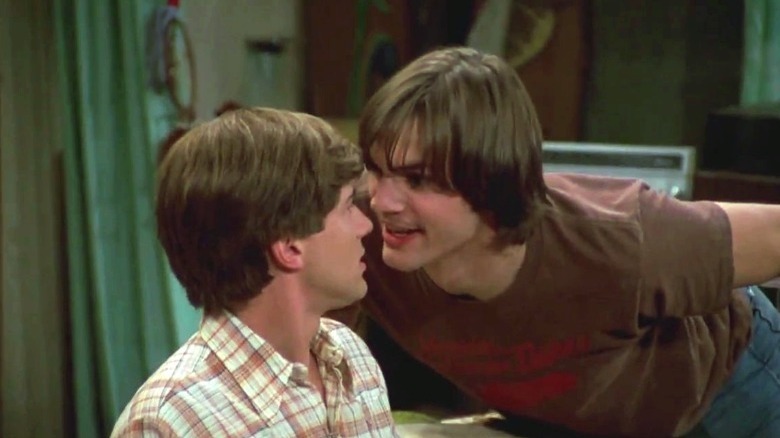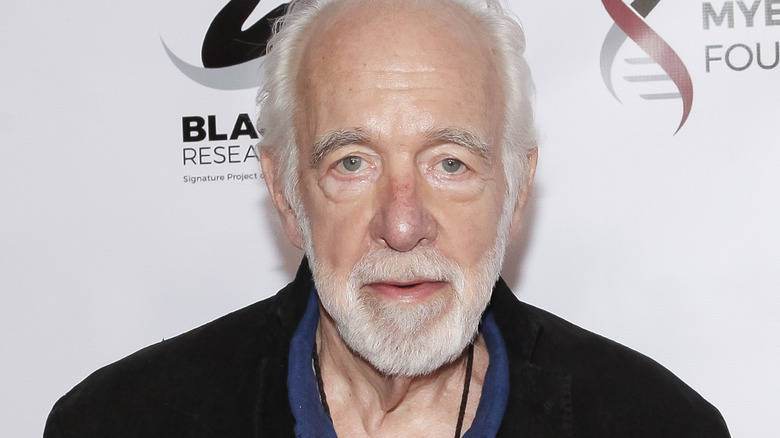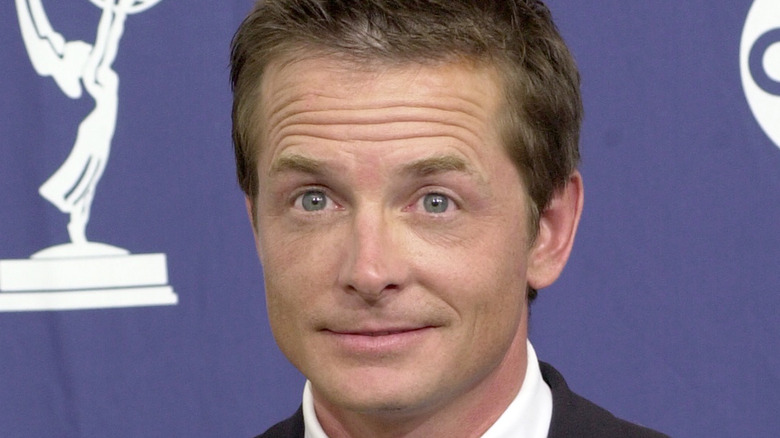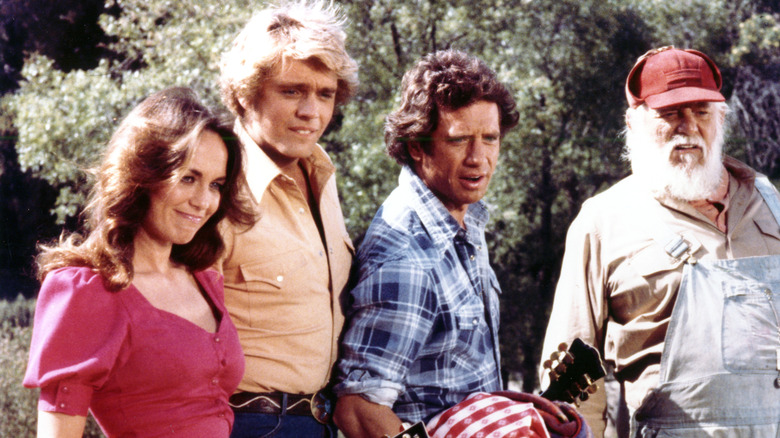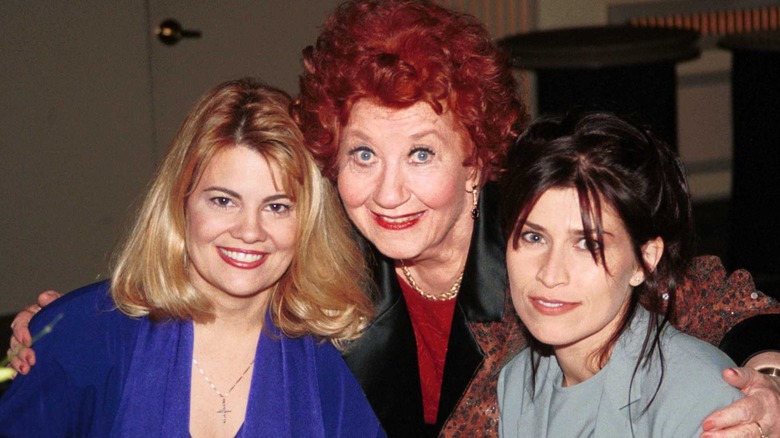TV Shows That Tanked After The Star Left
There are so many elements involved with making a TV show that it's a miracle any get off the ground, let alone make it to television where they're embraced by millions of people on a weekly basis for several years. One of the trickiest parts of putting a television series together is the casting — talent coordinators audition countless actors and actresses and put them through screen tests and chemistry reads to make sure they're absolutely positive they're correct for the role in their burgeoning funny sitcom or harrowing drama to-be.
If casting directors get it right, they can actually be somewhat punished for their success. If an actor becomes a huge star as the result of working on a TV show for years, they may be offered opportunities to do other things, be they higher paying or more creatively interesting. And so, they'll depart the series that made them who they are, leaving producers and writers to scramble and somehow continue on with their TV shows lacking a central force. It doesn't always work out, like with these shows that lost one or more of their main characters and tried to move on, and, as it would turn out, in vain.
Mom lost Anna Faris and then got canceled
The premise of the CBS sitcom "Mom" was stark and dramatic, but if anybody could mine the topics of addiction recovery and trying to put one's life and family back together after years of substance abuse, it was the crew and cast of this show, including co-creator Chuck Lorre (previously of mega-hits "Two and a Half Men" and "The Big Bang Theory") and stars Anna Faris ("Scary Movie," "The House Bunny") and Allison Janney (an Emmy and Oscar winner). Faris starred as Christy, a recovering alcoholic and single mother living with her mother, Bonnie (Janney), coping with her own self-destructive and disruptive issues.
Just days before "Mom" was set to begin production on its eighth season in September 2020, Faris unexpectedly quit the series. "The past seven years on 'Mom' have been some of the most fulfilling and rewarding of my career," Faris said in a statement released to TVLine. "I'm so thankful to Chuck, the writers, and my amazing castmates for creating a truly wonderful work experience." In the eighth season premiere, "Mom" explained that Christy moved away to law school. While the show had been focusing increasingly on Bonnie and her Alcoholics Anonymous group prior to Faris' departure, "Mom" became all about those characters. The show couldn't sustain the shift. A few months later, CBS announced that "Mom" would conclude at the end of its eighth season.
The truth about how The X-Files couldn't manage without David Duchovny
"The X-Files" made David Duchovny hugely famous, and he was a big part of why "The X-Files" became a cultural phenomenon in the 1990s. He played Fox Mulder, an unabashed believer of aliens and conspiracy theories who investigated paranormal activity with his FBI partner, the skeptical Dana Scully (Gillian Anderson). The show mixed action, science-fiction, mythology, comedy, and romance, and Duchovny deftly balanced it all, sending "The X-Files" into the top 20 of the TV ratings.
Prior to the series' seventh season in 1999, according to Variety, Duchovny sued Fox, alleging that it had sold reruns of "The X-Files" at a discount to its own affiliates, thereby cheating him out of a bigger payday. The lawsuit was eventually settled, but Duchovny filed it during contract renegotiations. According to the International Business Times, they came to an understanding: Fox Mulder would disappear at the end of the seventh season and appear occasionally in season eight. To replace him, producers brought in Robert Patrick as FBI agent John Doggett, who just couldn't replicate the chemistry his predecessor had enjoyed with Anderson. Viewership sunk to about half of what it had been at the show's peak by the 2001-2002 season, which would mark the end of the original run of "The X-Files."
Once Upon a Time, this fairy tale show tried a drastic reboot
ABC found success with "Once Upon a Time," a family fantasy show that mixed well-known fairy tale figures and folk legends with Disney movie characters. The action jumped from world to world, timeline to timeline, and included characters in both archetypal and reimagined forms, like Snow White, Prince Charming, Robin Hood, Aladdin, Elsa from "Frozen," and Ariel from "The Little Mermaid."
During production on season six, but before ABC had officially ordered a seventh season (per Entertainment Weekly), star Jennifer Morrison (Emma Swan) announced that she wouldn't be back if the show returned for another year. "I spent six years on 'House,' a year on 'How I Met Your Mother,' and spent six years on 'Once Upon a Time,' and collectively that's 13 years of network schedule, which is an amazing and incredible gift, but it's a grueling schedule," Morrison told Deadline. Within days of Morrison's announcement, five more cast members announced their "Once" exits, too: Rebecca Mader, Ginnifer Goodwin, Josh Dallas, Emilie de Ravin, and Jared Gilmore.
"Once Upon a Time" got a seventh season, but producers had little choice but to massively alter the makeup of the show. It time-jumped many years into the future, centering on Henry, once played by child actor Jared Gilmore, now an adult and portrayed by Andrew J. West. Viewership dropped, and so ABC canceled "Once Upon a Time."
When Mischa Barton left The O.C., the show withered
In the early 2000s, the hottest and most influential teen show was "The O.C.," Fox's drama about wealthy teens in monied Orange County, California. Ben McKenzie played juvenile delinquent Ryan Atwood, adopted into the kind and loving Cohen family where he forged a brother-like relationship with teenager Seth (Adam Brody) and had an on-again, off-again thing with the beautiful but extremely troubled girl next door, Marissa Cooper (Mischa Barton). Their love story ended tragically in the season three finale when the duo is driven off the road by a jilted ex-flame of Marissa, and she dies in Ryan's arms. Barton had already announced her departure from "The O.C." "I just had a lot in my career that I wanted to do and accomplish," Barton later told The New York Times. "I felt like things were really heavily reliant upon me, and I was getting no time to do any of the other offers that were out there."
Without its breakout star, "The O.C." threw a lot at the wall to see what would stick. For example, Seth and girlfriend Summer (Rachel Bilson) both have their college plans fall apart, while Ryan begins an unlikely romance with Taylor Townsend (Autumn Reeser), a busybody nerd he hated in high school. In one bizarre episode, the two fall into separate comas then meet up in an alternate universe where they must resolve personal issues before they can awake. Midway through that fourth season, Fox canceled "The O.C.," citing poor ratings.
Steve Carell's exit from The Office turned the show into Who's the Boss?
"The Office" debuted on NBC in early 2005. Tasked with the unenviable job of succeeding and interpreting Ricky Gervais, who co-created and starred as loathsome boss David Brent on the original BBC version of "The Office" was Steve Carell as the odious but likable paper company branch manager Michael Scott.
While Carell was known for his work on "The Daily Show" and in "Anchorman," he became a movie star with "The 40-Year-Old Virgin," released just a few months after "The Office" premiered. Suddenly, "The Office" had an A-lister at the top of its cast. During hiatuses, Carell kept up with movie work, starring in films like "Little Miss Sunshine," "Date Night," and "Get Smart." But in 2013, Carell's contract with NBC came up for renewal. With the cancellation of "The Office" nowhere on the horizon, Carell chose to leave the show. Writers gave Michael Scott a happy ending: the hopelessly awkward and lonely character found love with Human Resources director Holly (Amy Ryan) and they moved to Colorado.
Over the next two years, "The Office" flailed creatively as producers tried and failed to replace Carell and Michael Scott. Big stars like Will Ferrell, James Spader, Idris Elba, and Kathy Bates all played a succession of unlikeable supervisors, but none for very long. "The Office" petered out after its ninth season in 2013, its second minus Carell.
Kevin Can Wait but producers couldn't wait to fire Erinn Hayes
After starring as delivery driver Doug Heffernan on "The King of Queens" for nine years, Kevin James was a bonafide comedy star, and he went on to star in a string of popular movies, including Paul Blart: Mall Cop and Grown Ups. But after nearly a decade of that, James was ready to return to laugh-track-laden CBS comedies and in 2016 agreed to headlined "Kevin Can Wait," portraying Kevin Gable, a police officer set to retire from the force but can't because of family problems and money issues. "Kevin Can Wait" was very similar to "The King of Queens" in that they were both about doofuses inexplicably married to far more intelligent women. Leah Remini played that role (Carrie Heffernan) on "The King of Queens" while Erinn Hayes portrayed Donna Gable on "Kevin Can Wait." Well, Hayes did for just one season, until producers fired her.
"We were literally just running out of ideas," James told the Daily News about the shakeup, which included killing off Donna Gable. "But it really felt like a thing like this was needed for this show to drive forward." And by "forward," he meant backward, because "Kevin Can Wait" brought in James' old "King of Queens" cohort, Remini, to portray Vanessa Celluci, Kevin Gable's business partner. Though it was now essentially a "King of Queens" reboot, viewers didn't care, and "Kevin Can Wait" ratings actually dropped in season two, prompting its cancellation.
Sleepy Hollow replaced its lead and died
Fox's "Sleepy Hollow" was, like so many other network TV shows in the 2010s, a crime procedural show about detectives solving mysteries. It stood out from the others with a bizarre and audacious hook. While one of the two law enforcement officers was sharp and savvy police lieutenant and FBI agent Abbie Mills (Nicole Beharie), the other was Ichabod Crane (Tom Mison), the main character from Washington Irving's spooky 1820 classic short story "The Legend of Sleepy Hollow" who wakes up in the present day after centuries of slumber, a nod to Irving's other famous work, "Rip Van Winkle." Together, Abbie and Ichabod fought crime and busted ghosts for three seasons, until in 2016, when Abbie was killed off and Beharie left the series. Years later, Beharie explained that she departed the show after she felt she was treated poorly and dismissively by producers during a serious illness (via The San Diego Union-Tribune).
While ratings had fallen hard in the Beharie years, Sleepy Hollow Fox renewed "Sleepy Hollow" for a fourth season and ordered a soft reboot. Ichabod Crane was given a new partner from a new government agency: Diana Thomas of the Department of Homeland Security (played by new cast member Janina Gavankar). The changes didn't help the show much — "Sleepy Hollow" dropped to #123 in the ratings, and Fox put it to sleep.
Laverne and Shirley couldn't go long without Shirley
From Laurel and Hardy to Wayne and Garth, a lot of screen comedy has relied on a duo with tight chemistry. The 1976-1983 ABC sitcom "Laverne and Shirley" featured one of the best two-person acts to ever hit the small screen, with Penny Marshall and Cindy Williams as Laverne DeFazio and Shirley Feeney, scrappy brewery workers, roommates, and best friends. "Laverne and Shirley" finished its first season as the #2 show on TV, and it hit #1 two years later.
"Laverne and Shirley" remained a highly-rated show through its seventh season, but viewers started to change the channel in the 1982-83 season. The reason: The show, built around the rapport between Marshall and Williams, necessarily lost all the magic when Williams left. According to Marley Brant's "Happier Days: Paramount's Classic Television Sitcoms, 1974-1984," the actor became pregnant in 1982 and received promises from producers that they'd work it into the show. Williams alleged that the higher-ups then changed their mind, and also reneged on an agreement to pay Williams for episodes she wouldn't appear in when she wasn't feeling well enough to work. All the plans fell apart, and Williams walked off the set in August 1982 and then filed a $20 million lawsuit against producers. It was settled out of court, but she never appeared on "Laverne and Shirley" again, which sputtered to an end after one Laverne-only season.
That '70s Show felt like an aging show from the '70s
Not only was "That '70s Show" a nostalgic look back at life in the 1970s, but it also played like a sitcom from the Bicentennial era, too. It taped on a fake-looking set in front of a studio audience, utilized a laugh track, and presented plots that could have been used with little alteration on "Happy Days" or "Welcome Back, Kotter."
In 2005, according to Fox News, "That '70s Show" pulled off its most meta, '70s-TV-style trick ever when it lost two of its stars and tried to fill the massive void they left behind with a new actor and character. Just like when Ron Howard left "Happy Days" and John Travolta bowed out of "Welcome Back, Kotter," Topher Grace decided that seven seasons of portraying goofy teen Eric Foreman was enough, and he departed to pursue his thriving movie career (while Eric moved to Africa). Co-star Ashton Kutcher (dumb hunk Kelso) also announced his exit, although he stuck around for a bit in the eighth season to explain that his character moved from Wisconsin to Chicago.
"That '70s Show" producers brought in "Mad TV" cast member Josh Meyers to play a new character named Randy, who hangs out with Hyde (Danny Masterson) in Kelso's absence, and dates Eric's old girlfriend, Donna (Laura Prepon). Without Grace and Kutcher, ratings for "That '70s Show" tanked, and Meyers didn't have time to gain a foothold, because Fox canceled the series at the end of its eighth season in 2006.
When Howard Hesseman went truant from Head of the Class
Debuting on ABC in 1986, "Head of the Class" was primarily a vehicle for Howard Hesseman, the Emmy-nominated star of the 1978-82 radio station sitcom "WKRP in Cincinnati." Set in a New York City high school, "Head of the Class" was also one of the few diverse shows on TV at the time and one of the few teen-oriented shows ever to center on smart, high-achieving kids. Hesseman brought warmth and understatement to his role of history teacher and mentor Charlie Moore, allowing the show's younger cast members the spotlight. Audiences responded positively, with "Head of the Class" ranking in the top 30 of the TV ratings for each of its first four seasons. However, one important person despised "Head of the Class": Hessemann. In 1989, he told the Chicago Tribune that he felt the show lacked any value, adding, "We're not doing the show that I was led to believe I'd do."
Hesseman unsurprisingly graduated from "Head of the Class" in 1990, and Charlie Moore was replaced by Billy McGregor, a charismatic and wacky teacher portrayed by Scottish comedian Billy Connolly. While his comedy can be engaging and fascinating, that style didn't fit with "Head of the Class," which, with Connolly headlining, became less a show about high school kids and more of a show about high school kids sitting in a classroom listening to their teacher do stand-up routines. ABC canceled "Head of the Class" in 1991.
Without Michael J. Fox, Spin City had a certain Sheen
Michael J. Fox won three Emmy Awards for his role as Alex P. Keaton on "Family Ties," a cutthroat but secretly kindhearted Reagan-worshipping Republican with political aspirations. After that series ended in 1989, Fox focused on movies, starring in two "Back to the Future" sequels, "Greedy," and "Doc Hollywood" before returning to television sitcoms in 1996, once again playing a character for whom politics were extremely important. On "Spin City," he played a constantly hustling, deal-making, people-pleasing, bed-hopping New York deputy mayor named Michael Flaherty. Fox earned three straight Emmy nominations for "Spin City," which ranked among the 20 most watched shows on TV in its rookie season. During its fourth year (1999-2000), the show just barely fell out of the top 30, but it would face a much bigger challenge when Fox departed the series at that point. According to The New York Times, Fox, battling Parkinson's disease for years, needed to focus on his health and raising funds for research.
Michael Flaherty became a lobbyist in Washington, D.C., while producers brought in Charlie Sheen to play new deputy mayor Charlie Crawford. "Spin City" evolved into a romantic comedy, with Sheen and Heather Locklear's characters engaged in an endless will-they-or-won't-they. In its first year without Fox, "Spin City" lost a million viewers, and then in its second year, it lost another two million. In the spring of 2002, ABC canceled "Spin City."
The Dukes of Hazzard couldn't make the jump
There was nothing on TV quite like "The Dukes of Hazzard." Set in the rural South, it was an action-comedy about cousins Bo (John Schneider) and Luke Duke (Tom Wopat), who, according to the theme song from narrator Waylon Jennings, had been in trouble with the law since the day they were born. They avoided police by jumping their souped-up orange Dodge (the "General Lee") and the assistance of their scantily clad cousin, Daisy Duke (Catherine Bach). In the late 1970s, "The Dukes of Hazzard" was one of the most-watched shows on TV, and it also moved a lot of merchandise, such as T-shirts, lunchboxes, and toy versions of the General Lee — about $125 million worth a year, according to the New York Times.
Schneider and Wopat didn't think they received a fair cut, and in 1982, per the Los Angeles Times, threatened to walk unless producer Warner Bros. gave them a raise and a portion of merchandise profits. Surprisingly, Warner let them go, and hired novice actors Byron Cherry and Christopher Mayer to play two new Duke cousins named Coy and Vance. (Bo and Luke, the show explained, had run off to become NASCAR drivers.)
After the abrupt switch-up, viewers switched off "Dukes." The show dropped from #6 in the ratings to #34, prompting Warner to bring back Schneider and Wopat with hefty financial compensation. Coy and Vance (and Cherry and Mayer) disappeared, but "Dukes" never recovered in the ratings department, and CBS axed the show in 1985.
It's a fact that The Facts of Life fell apart without Charlotte Rae
On "Diff'rent Strokes," Broadway legend Charlotte Rae portrayed Edna Garrett, housekeeper to the wealthy Mr. Drummond and mother figure to his brood of biological and adopted children. After just a few dozen episodes, Rae got a spinoff: "The Facts of Life." She left the Drummonds to take a job as a nutritionist (and later housemother) at the upstate New York boarding school Eastland. After its first season (1979-80), producers retooled "The Facts of Life," cutting the large cast of students down to just a core four who would learn moral lessons (or, you know, the facts of life) over the course of the next decade: plucky Tootie, tough Jo, spoiled Blair, and funny Natalie. When they graduated in 1983, the action moved from Eastland to Mrs. Garrett's gourmet foods shop, staffed by her four favorite students. Three years later, Rae left the show. She thought it was time to move on, later telling Entertainment Weekly that she felt she "really wasn't needed that much," as Mrs. Garrett had served her purpose of raising her charges to adulthood.
Rather than end "The Facts of Life," producers replaced Rae, bringing in Emmy and Oscar winner Cloris Leachman as a new mentor figure (and Mrs. Garrett's sister) named Beverly Ann. But according to staff director John Bowab, Leachman "never had the connection with the girls" that Rae enjoyed. Leachman starred in two and ultimately the final seasons of "The Facts of Life."

